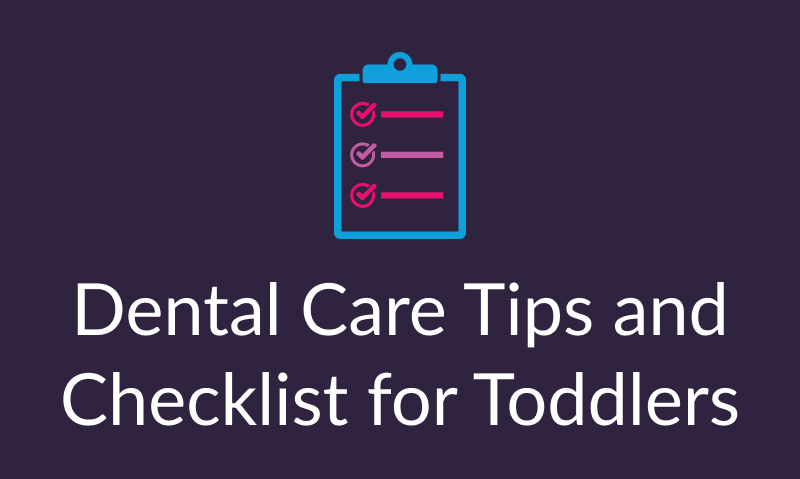Dental Care Tips and Checklist for Toddlers

- Toddlers are typically too young to brush their teeth effectively by themselves, but parents should start teaching their kids good oral care habits at this age.
- Brush your toddler’s teeth twice a day with fluoride toothpaste and a child-sized toothbrush. Using fun toothpaste flavors, like bubblegum or orange, is a great way to get them excited about brushing!
- Use only a small amount of toothpaste, about the size of a single English pea.
- Make a game of teeth brushing to prepare your child for brushing on their own in the future. Playing a two-minute song or singing a nursery rhyme to them as they brush are other fun possibilities.
- Begin flossing your toddler’s teeth as soon as at least two adjacent teeth have erupted. Consider using fun-flavored dental floss to make the experience more enjoyable.
- Every child needs to have their first dental visit by their first birthday. Follow the schedule set by your pediatric dentist for subsequent visits.
- Baby teeth are important, and tooth decay can be painful and distressing to toddlers. So, limit sugary foods and treats to help prevent tooth decay.
- Calcium-rich foods, like cheese and milk, help toddlers form strong teeth.
- Fruit juice may sound healthy, but it’s full of sugar. Water is a much healthier alternative. Avoid sodas altogether.
- Never let your toddler go to bed with a beverage other than water. Otherwise, harmful bacteria can damage their teeth overnight.
- A diet rich in vegetables is good for your toddler’s teeth, as well as their overall health.
- The American Academy of Family Physicians says pacifiers are fine for infants but should not be given to children older than six months. Prolonged pacifier use can lead to misaligned teeth and even jaw problems, a condition called pacifier teeth.
- The risk of pacifier teeth increases with age. Children over four years old are most prone to this problem. If you’re having trouble getting your child to stop using a pacifier, ask your pediatric dentist for help.
- Thumb sucking can also cause dental problems and is not a good alternative to pacifier use. In addition to misaligned teeth, thumb sucking can also introduce harmful bacteria to your child’s mouth and may contribute to the spread of colds and other illnesses.
- To help break a pacifier habit, praise your child for refraining from a pacifier. You may consider rewarding them with stickers or fun activities. Don’t use sweets as a reward.
- Young children require professional dental care tailored to their needs, so consider a pediatric dental practice.
- Fluoride treatments are crucial for preventing cavities among toddlers and are completely safe and painless. Ask your child’s dentist about fluoride treatments, particularly if your drinking water is not fluoridated. About 75% of municipal water sources in the U.S. add fluoride. You can contact your local water board to find out if your tap water is fluoridated.

